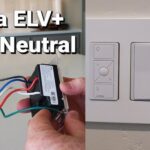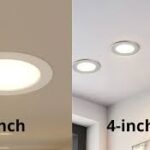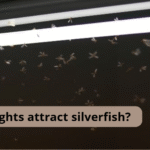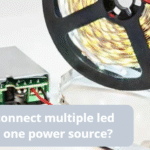Contents
- 1 How to make a hole in a light bulb?
- 2 ⚠️ SAFETY WARNING
- 3 TOOLS AND MATERIALS
- 4 STEP-BY-STEP GUIDE
- 5 TIPS
- 6 Common Uses
- 7 FAQs
- 7.1 Can I use any type of light bulb?
- 7.2 Is it safe to make a hole in a light bulb?
- 7.3 How do I make a hole without breaking the whole bulb?
- 7.4 What is the black part at the bottom of the bulb?
- 7.5 What should I do with the filament and inner parts?
- 7.6 Can I reuse the bulb after drilling?
- 7.7 How can I make the edges smooth after drilling?
How to make a hole in a light bulb?
Making a hole in a light bulb is a delicate and potentially dangerous process that should only be done with proper safety precautions. It’s often done for art projects, DIY terrariums, or science experiments.
⚠️ SAFETY WARNING
- Risk of injury: Glass can shatter unexpectedly.
- Risk of mercury exposure: Do NOT do this with fluorescent or CFL bulbs — they contain mercury.
- Only use standard incandescent or clear glass Edison bulbs.
TOOLS AND MATERIALS
| Item | Purpose |
|---|---|
| Incandescent light bulb | Only use this type |
| Needle-nose pliers | For removing inner components |
| Screwdriver (flathead) | Used to break internal black glass |
| Safety goggles | Protect your eyes |
| Gloves (cut-resistant) | Protect your hands |
| Towel or cloth | Stabilize bulb during handling |
| Small drill (optional) | For precise external holes |
| Mask (optional) | Avoid inhaling fine glass dust |

STEP-BY-STEP GUIDE
Step 1: Prepare Your Workspace
- Work over a soft surface (towel, cardboard) to catch debris.
- Ensure good ventilation.
- Put on gloves and safety goggles.
Step 2: Remove the Metal Contact and Black Glass Insulator
- Hold the bulb upside-down over a towel.
- Use needle-nose pliers to pull out the metal tip at the bottom of the bulb.
- Insert a flathead screwdriver into the black glass insulator (at the base).
- Gently twist and crack it — be careful, it’s brittle and will crumble.
Step 3: Remove the Filament Assembly
- Use pliers or tweezers to extract the inner filament parts.
- Tip the bulb and gently shake out all loose bits.
Step 4: Clean the Inside (Optional)
- Rinse with water to remove any remaining glass powder.
- Let dry fully before using in any craft.
Optional: Drill a Side Hole
If you want a side hole in the glass for wires or plants:
- Use a Dremel with a diamond drill bit.
- Apply water as lubricant.
- Drill slowly at a 45-degree angle.
- Stop periodically to prevent overheating.
Pros
- Customizable (paint, fill, light)
- Inexpensive and accessible
- Great for DIY crafts & terrariums
Cons
- Not suitable for children
- Risk of cuts or injury
- Fragile — glass shatters easily
TIPS
- Always label used bulbs as “non-functional” to prevent confusion.
- Never plug in a hollowed bulb — it’s no longer electrically safe.
- Consider using LED dummy bulbs if you don’t want to handle glass.
Common Uses
- Miniature terrariums
- Steampunk art
- Message-in-a-bottle projects
- DIY oil lamps

FAQs
Can I use any type of light bulb?
No. Only use incandescent or Edison-style bulbs.
Do NOT use fluorescent (CFL) or LED bulbs — they contain harmful chemicals or complex components.
Is it safe to make a hole in a light bulb?
Only if you take proper safety precautions:
Wear gloves and goggles
Work on a soft surface
Handle broken glass carefully
It’s still risky — proceed at your own discretion.
How do I make a hole without breaking the whole bulb?
For a side hole:
Use a diamond drill bit
Drill slowly while dripping water on the area
Start at a 45° angle, then level off
Be gentle — the glass is thin and fragile
What is the black part at the bottom of the bulb?
That’s a glass insulator. It can be cracked and removed with a screwdriver to access the bulb’s interior.
What should I do with the filament and inner parts?
Use pliers to gently remove them after breaking the black insulator.
Dispose of all parts safely — they’re sharp and delicate.
Can I reuse the bulb after drilling?
No. Once opened, the bulb can’t function as a light source and should only be used for decorative or artistic purposes.
How can I make the edges smooth after drilling?
You can:
Use fine sandpaper to polish edges
Use a diamond file or rotary tool on low speed
Be cautious — the glass edge can still be sharp
READ ALSO: How to Change a 2-Pin Halogen Light Bulb (Step-by-Step Guide)










![Daylight vs Soft white [5+ principal distinctions] Daylight Vs Soft White: Best Helpful Compare & Pros | Corn](https://howtolightguide.com/wp-content/uploads/2024/02/light.jpg)
![What is RGBIC? [a detailed breakdown 2024] What Is RGBIC: Top 4 Factors & Best Guide | Helpful Review](https://howtolightguide.com/wp-content/uploads/2024/02/howtolightguid.jpg)